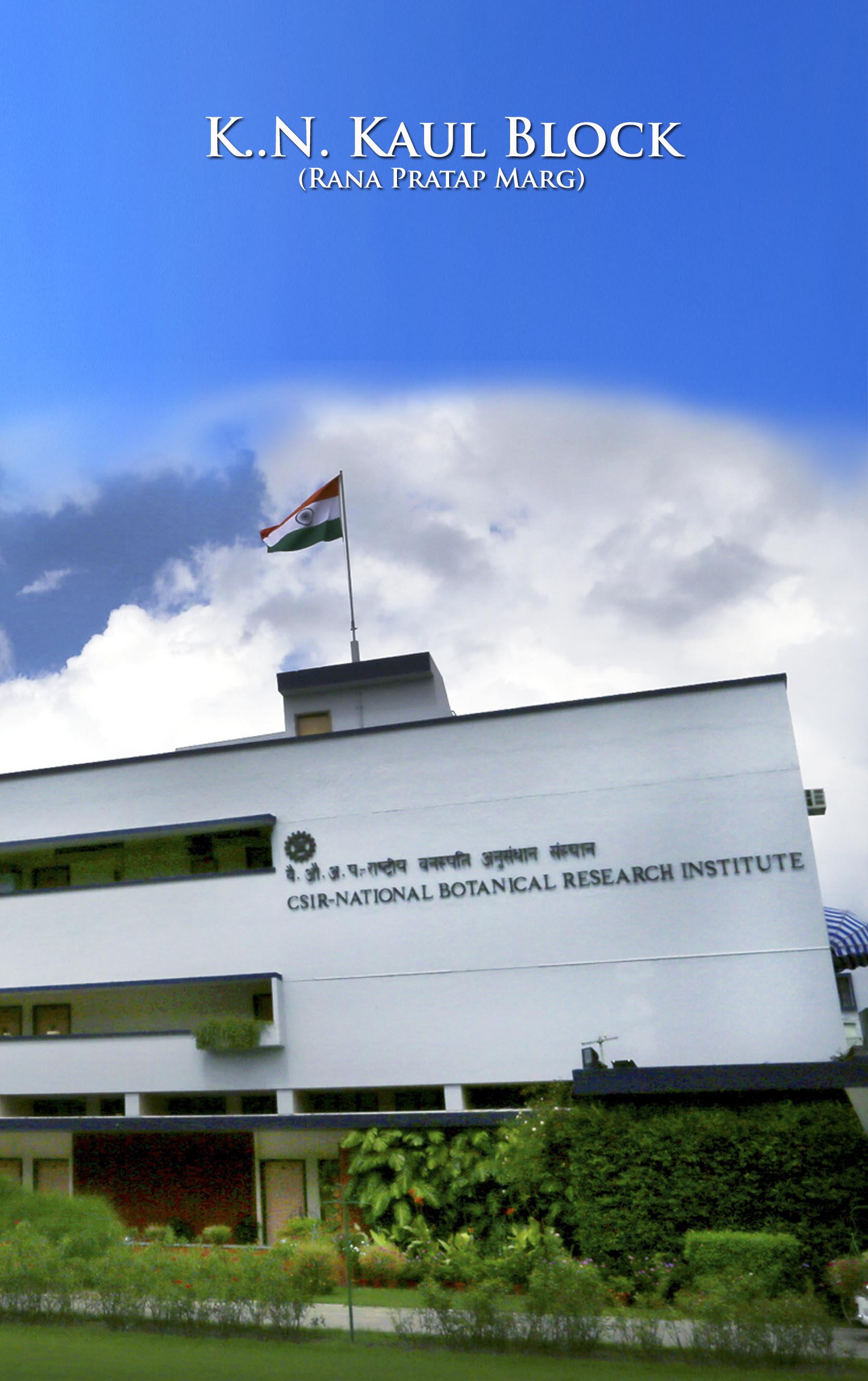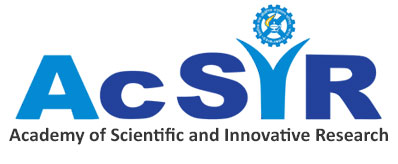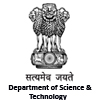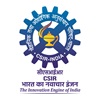

Dr Lal Bahadur
Principal Scientist
Research Interests
- Evaluation of non-traditional economic plants (medicinal, aromatic, spices and floricultural) for their yield and quality under abiotic (salt/drought/water) stress conditions.
- Soil and plant nutrients profiling and their management for optimum yield and quality of the plant.
- Soil carbon sequestration, nutrient dynamics & microbial diversity under diverse land use systems.
- Skill Development and Outreach Programmes/ Extension Activities.
Dr Lal Bahadur
Principal Scientist
Research Details
(i) Evaluation of non-traditional economic plants under salt stress conditions:
The wasteland area is estimated to be about 557.66 lakh ha (16.96 %) in India. Out of that, 6.31 lakh ha area is under saline and sodic condition. Uttar Pradesh is the largest state of the country having 2.13 lakh ha area under saline and sodic soil, which is equal to 33.8 % of the total saline and sodic lands in India (NRSC, 2019). Salt tolerant varieties of some non-traditional crops, which can produce valuable products under salt stress conditions are evaluated for economic utilization of sodic lands. Some non-traditional crops are being evaluated for cultivation in sodic land with their nutrient management practices. There is a need to study the proposed crops under sodic lands. Some economic plants and their varieties like Ghritkumari (Aloe vera L.), Kalmegh (Andrographis paniculata), Ashwagandha (Withania somnifera L.), Satavar (Asparagus racemosus), Shankhpushpi (Convolvulus microphyllus Sieb. ex spreng Syn. Convolvulus pleuricaulis Choisy), Tuberose (Polianthes tuberosa L.), Marigold (Tagetis erecta L.), Gladiolus (Gladiolus communis L.) and Turmeric (Curcuma longa L.) are under evaluation with different sodicity levels for their optimum yield and quality.
Ongoing Project- To identify the potential Aloe species for cultivation in normal and salt-affected soils
In view of multifarious uses, the demand for the products of the Aloe species is increasing worldwide. Many Aloe sp. are available in the country, but their quality is not standardized for their economic utilization. Nutrient profiling and biochemical compounds in gel (juice) of Aloe spp. cultivated under normal and different categories of salt-affected soils shall be identified. Potential Aloe species shall be identified for specific quality parameters i.e. vitamins, enzymes, minerals, amino acids, etc. Critical limits (Exchangeable Sodium Percentage-ESP) of Aloe species shall be identified for cultivation in salt-affected soils.
(ii) Soil and plant nutrients profiling for optimum yield and quality of the plant:
General recommendations of nutrient management for crops are not considered suitable for optimum yield and quality of the crop, which is generally practiced by farmers. The Site Specific Nutrient Management (SSNM) is the present need for the development of a package of practices for specific crops in a particular soil condition. Integrated Nutrient Management (INM) is the judicious combination of organic, inorganic, and bio-fertilizers. Therefore, we are working on SSNM, INM, and organic farming for non-traditional economic plants.
Ongoing Project- Effect of arsenic on secondary metabolites of ginger (Zingiber officinale) and determination of critical limit in the soil for their cultivation
Medicinal plants cultivated in arsenic contaminated regions may pose health issues for consumers. Ginger (Zingiber officinale Rosc.), a medicinal plant, has been widely used in herbal medicines worldwide. India is the largest producer of ginger and contributes approximately 45% of the world’s annual ginger production. In West Bengal, nine districts (Malda, Murshidabad, Nadia, North 24 Parganas, South 24 Parganas, Kolkata, Howrah, Hoogly, and Burdwan) out of 23 districts are the prone area of arsenic contamination. The presence of toxic metals in medicinal plants imposes serious health issues. Thus, it is important to investigate the chemical profile of ginger for protecting human health against arsenic hazards. Low arsenic accumulating ginger variety with high medicinal properties will be screened for safer human consumption.
(iii) Soil organic carbon fixation/sequestration:
In recent years, the status of soil organic carbon (SOC) has deteriorated considerably due to long periods of continuous cultivation with chemical fertilizers. The major consequence of the decrease in SOC in soil resulted in lower agricultural productivity with a direct negative effect on food quality and security. Soil organic carbon plays a key role in nutrient cycling and helps in improving soil structure, nutrient availability and water holding capacity, aeration, and workability. We are working on developing modules for the optimum organic carbon levels for optimum yield and quality of the crops and also to identify the suitable tree species for improvement in organic carbon status and quality of the soil under cultivated land use systems in sub-tropical climatic conditions, especially for Indo-Gangetic plains of the country with the aspect of carbon sequestration potential to mitigate the problems of climate change.
(iv) Skill Development/ Outreach Programmes/ Extension Activities:
We organize the ‘Skill Development Programme’ on “Soil & Water Testing Lab Analyst” under the ‘Agriculture Skill Council of India (ASCI)’ through ‘National Skill Development Council (NSDC)’. Under the extension activities, popularization of soil testing and fertilizer recommendation for the crops, sodic land reclamation and its nutrient management package, selection of the crops/ plants for different sodicity levels, enrichment of the soil carbon pools by various land use practices through training and demonstration.
Significant achievements
- Standardized the site-specific nutrient management (SSNM) package for Turmeric (Curcuma longa) and a package of practices of Kalmegh (Andrographis paniculata Wall. Ex Nees) for cultivation under salt-affected soils and organic farming.
- Successfully evaluated the Coriander (Coriandrum sativum), Ashwagandha (Withania somnifera (Linn.) Dunal) and Kalmegh (Andrographis paniculata Wall. Ex Nees), Shankhpushpi (Convolvulus microphyllus Sieb. ex spreng Syn. Convolvulus pleuricaulis Choisy), Turmeric (Curcuma longa L.) and determined their critical limit for cultivation in sodic soil.
- Identified the practices for soil carbon sequestration under cultivated land use systems.
Dr. Lal Bahadur
Principal Scientist
- Yadav S., Singh S.R., Bahadur L., Kumari U., Banerjee T., Gupta S., Singh N. (2023) Sugarcane trash ash affects degradation and bioavailability of pesticides in soils, Sugar Tech, 25, 77-85. Impact Factor- 1.872
- Shukla J., Mohd S., Kushwaha A.S., Narayan S., Saxena P.N., Bahadur L., Mishra A., Shirke P.A. and Kumar M. (2022) Endophytic fungus Serendipita indica reduces arsenic mobilization from root to fruit in colonized tomato plant, Environmental Pollution, 298, 118830, Impact factor- 9.988
- Tandon A., Anshu, Kumar S., Yadav U., Mishra S.K., Srivastava S., Chauhan P.S., Srivastava P.K., Bahadur L., Shirke P.A., Srivastava M., Tewari S.K., Singh P.C. (2022) Trichoderma primed rice straw alters structural and functional properties of sodic soil, Land Degradation & Development, 33: 698-709, Impact Factor- 4.377
- Raj A., Yadav A., Arya S., Sirohi R., Kumar S., Rawat A.P., Thakur R.S., Patel D.K., Bahadur L. and Pandey A. (2021) Preparation, characterization and agri applications of biochar produced by pyrolysis of sewage sludge at different temperatures, Science of The Total Environment, 795,148722, Impact Factor- 10.753
- Singh S.R., Yadav P., Singh D.R., Shukla S.K., Tripathi M.K., Bahadur L., Mishra A. and Kumar S. (2021) Intercropping in sugarcane improved functional diversity, soil quality and crop productivity, Sugar Tech, 23(4): 794-810, Impact Factor- 1.872
- Singh S.R., Yadav P., Singh D., Bahadur L., Singh S.P., Yadav A.S., Mishra A., Yadav P.P.S., and Kumar S. (2020) Impact of different crop grown systems on land nutrient index, microbial diversity and soil quality, Land Degradation & Development, 32(14): 3973-3991, Impact Factor- 4.977.
- Singh S.R., Yadav P., Singh D., Tripathi M.K., Bahadur L., Singh S.P., Mishra A. and Kumar S. (2020) Cropping systems influence microbial diversity, soil quality and crop yields in Indo-Gangatic plains of India, European Journal of Agronomy, 121, 126152, Impact Factor- 5.124.
- Dwivedi S., Kumar A., Mishra S., Sharma P., Sinam G., Bahadur L., Goyal V., Jain N. and Tripathi R.D. (2020) Orthosilicic acid (OSA) reduced grain arsenic accumulation and enhanced yield by modulating the level of trace element, antioxidants and thiols in rice, Environmental Science and Pollution Research, 27(19): 24025-24038. Impact Factor- 4.223.
- Kumar S., Singh A., Kumar B., Singh B., Bahadur L. and Lal M. (2018) Simultaneous quantitative determination of bioactive terpene indole alkaloids in ethanolic extracts of Catharanthus roseus (L.) G. Don by ultra high performance liquid chromatography-tandem mass spectrometry, Journal of Pharmaceutical and Biomedical Analysis, 151, 32-41. Impact Factor- 2.983.
- Chandra P., Kannaujia R., Saxena A., Srivastava M., Bahadur L., Pal M., Singh B.P., Ojha S.K. and Kumar B. (2016) Quantitative determination of multi markers in five varieties of Withania somnifera using ultra-high performance liquid chromatography with hybrid triple quadrupole linear ion trap mass spectrometer combined with multivariate analysis: Application to pharmaceutical dosage forms, Journal of Pharmaceutical and Biomedical Analysis, 129: 419-426, Impact Factor- 3.255.
- Chandra P., Kannaujia R., Pandey R., Shukla S., Bahadur L., Pal M. and Kumar B. (2016) Rapid Quantitative Analysis of Multi-Components in Andrographis Paniculata using UPLC-QqQLIT-MS/MS: Application to Soil Sodicity and Organic Farming, Industrial Crops and Products, 83:423-430, Impact Factor- 3.181.
- Bahadur L. and Tiwari D.D. (2014) Nutrient management in Mung Bean (Vigna radiata L.) through sulphur and biofertilizers, Legume Research, 37(2): 180-187, Impact Factor- 0.146.
- Bahadur L., Tiwari D.D., Mishra J. and Gupta B.R. (2013) Nutrient management in rice- wheat cropping sequence under sodic soil, Journal of the Indian Society of Soil Science, 61(4): 341-346.
- Bahadur L., Tiwari D.D., Mishra J. and Gupta B.R. (2013) Evaluation of integrated nutrient management options in Rice (Oryza sativa L.)-Wheat (Triticum aestivum L.) cropping system in reclaimed sodic land, Indian Journal of Agronomy, 58(2): 137-145.
- Bahadur L., Tiwari D.D., Mishra J. and Gupta B.R. (2012) Effect of integrated nutrient management on yield, microbial population and changes in soil properties under rice- wheat cropping system in sodic soil, Journal of the Indian Society of Soil Science, 60 (4): 326-329.
- Garg V.K. and Bahadur L. (2011) Effect of sodicity on growth, cation composition, yield and quality of Coriander (Coriandrum sativum), Journal of Medicinal and Aromatic Plant Sciences, 33(2): 165-171.
Dr Lal Bahadur
Principal Scientist
Patents
Dr Lal Bahadur
Principal Scientist
Research Scholars
- Dr. Surabhi Awasthi, ICMR-RA
- Ms. Pratibha Verma, CSIR-JRF, Ph.D. Scholar
- Mr. Sudesh Kumar, Ph.D. Scholar
Dr Lal Bahadur
Principal Scientist
Address
Soil Science Laboratory,
CSIR-National Botanical Research Institute,
Rana Pratap Marg, Lucknow, 226001
Email: lb.yadav@nbri.res.in
Phone no.: 9795875336, 0522-2297915






















